

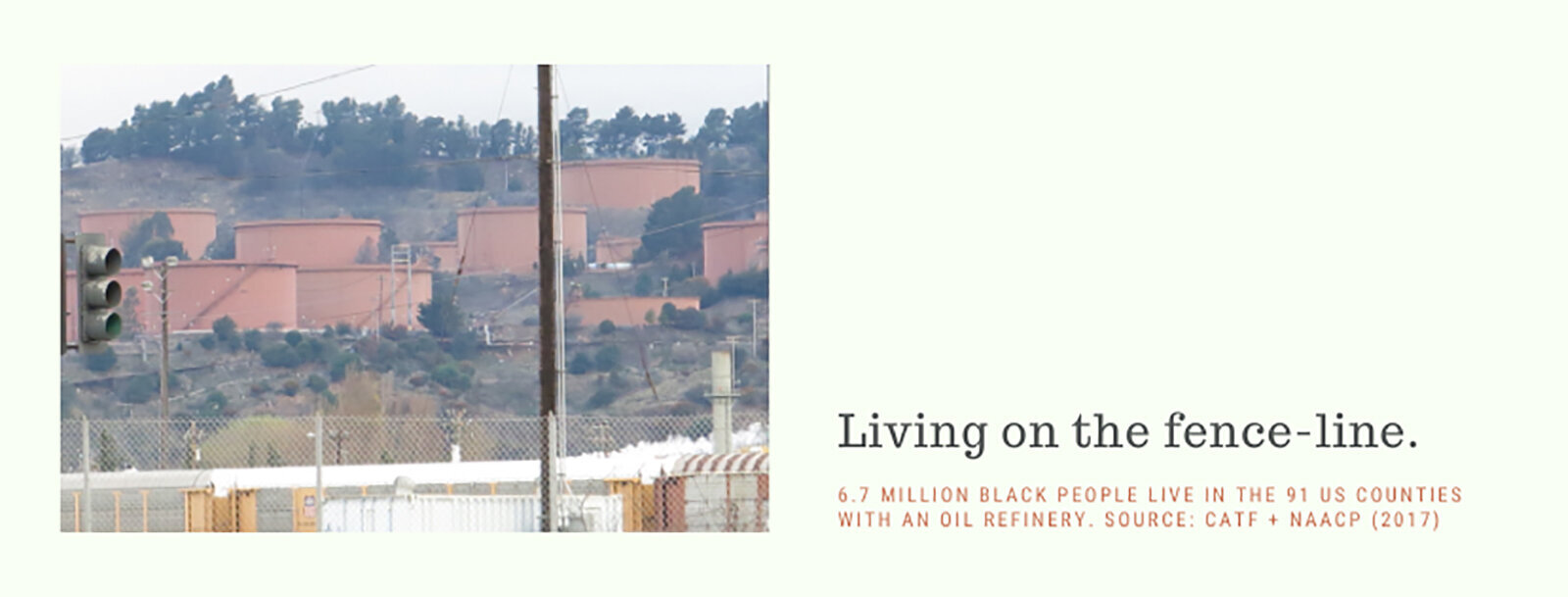
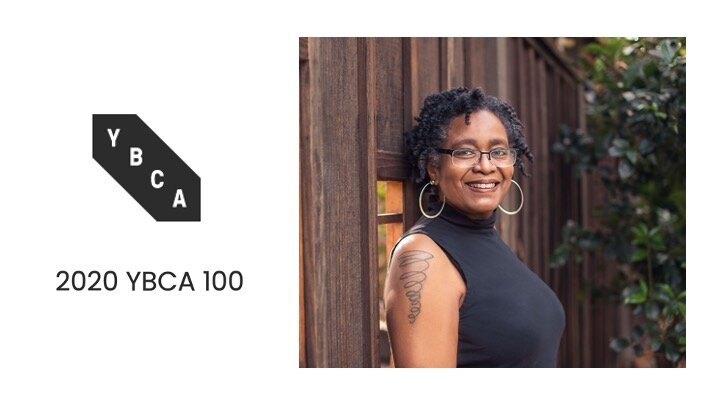


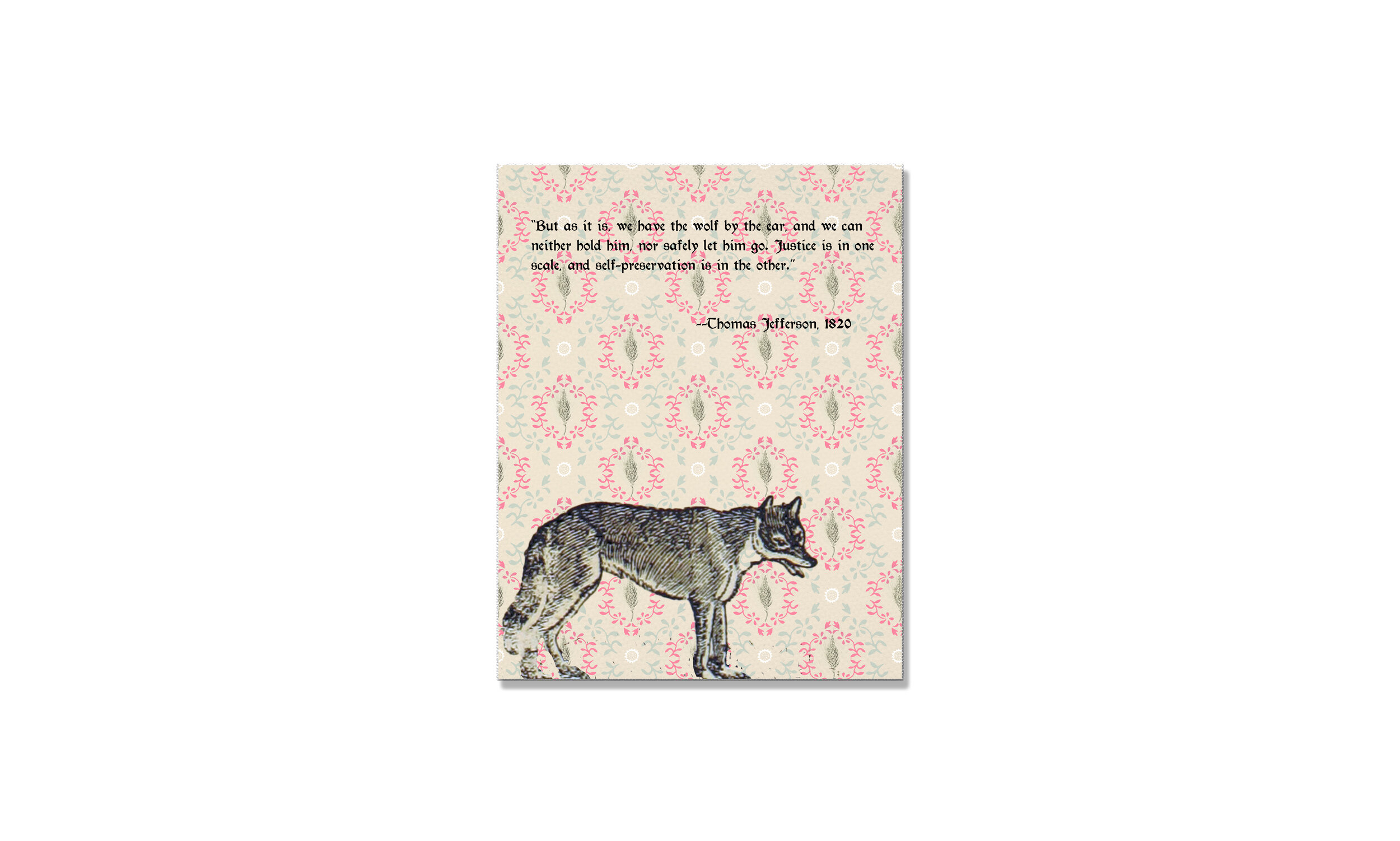
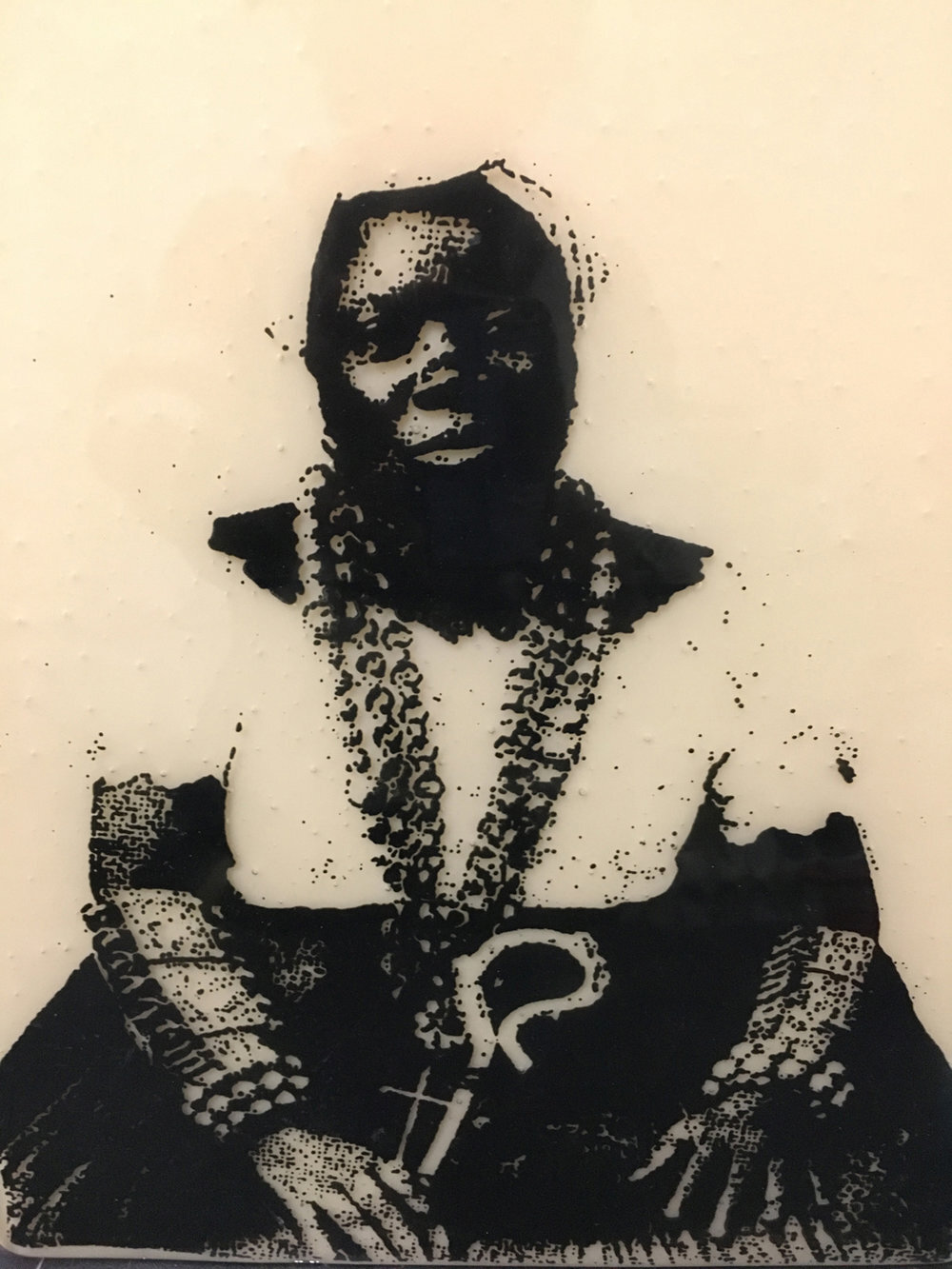
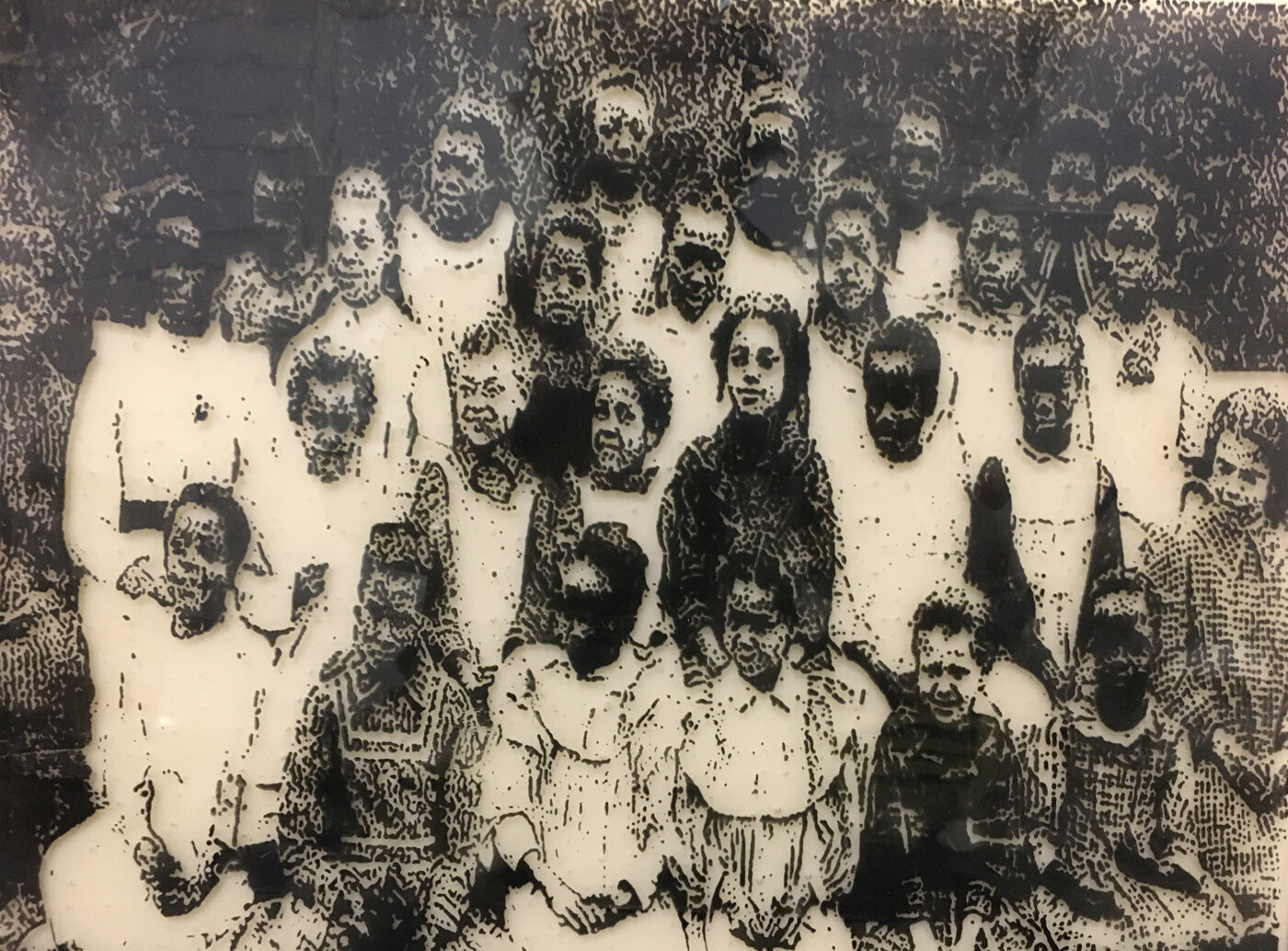
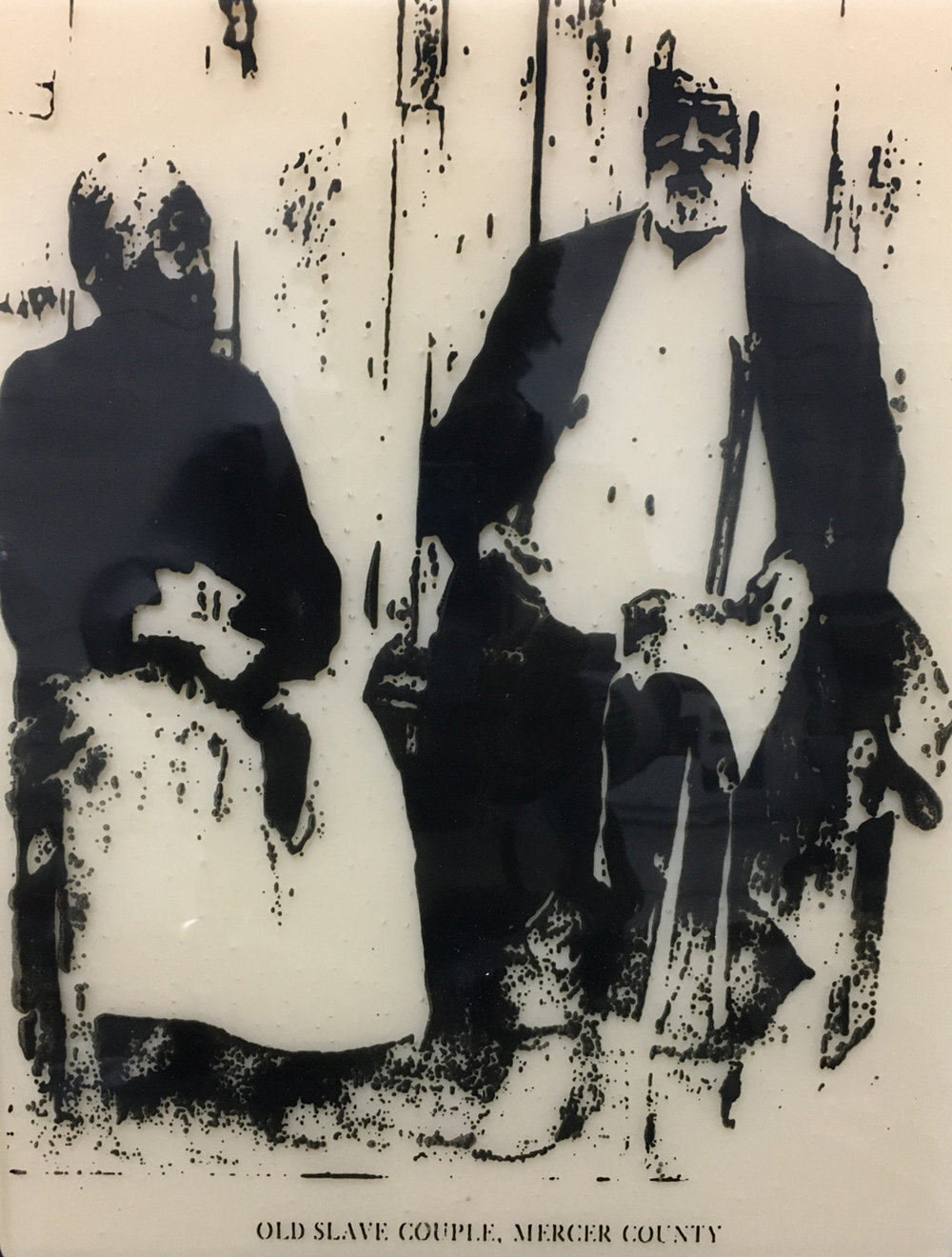
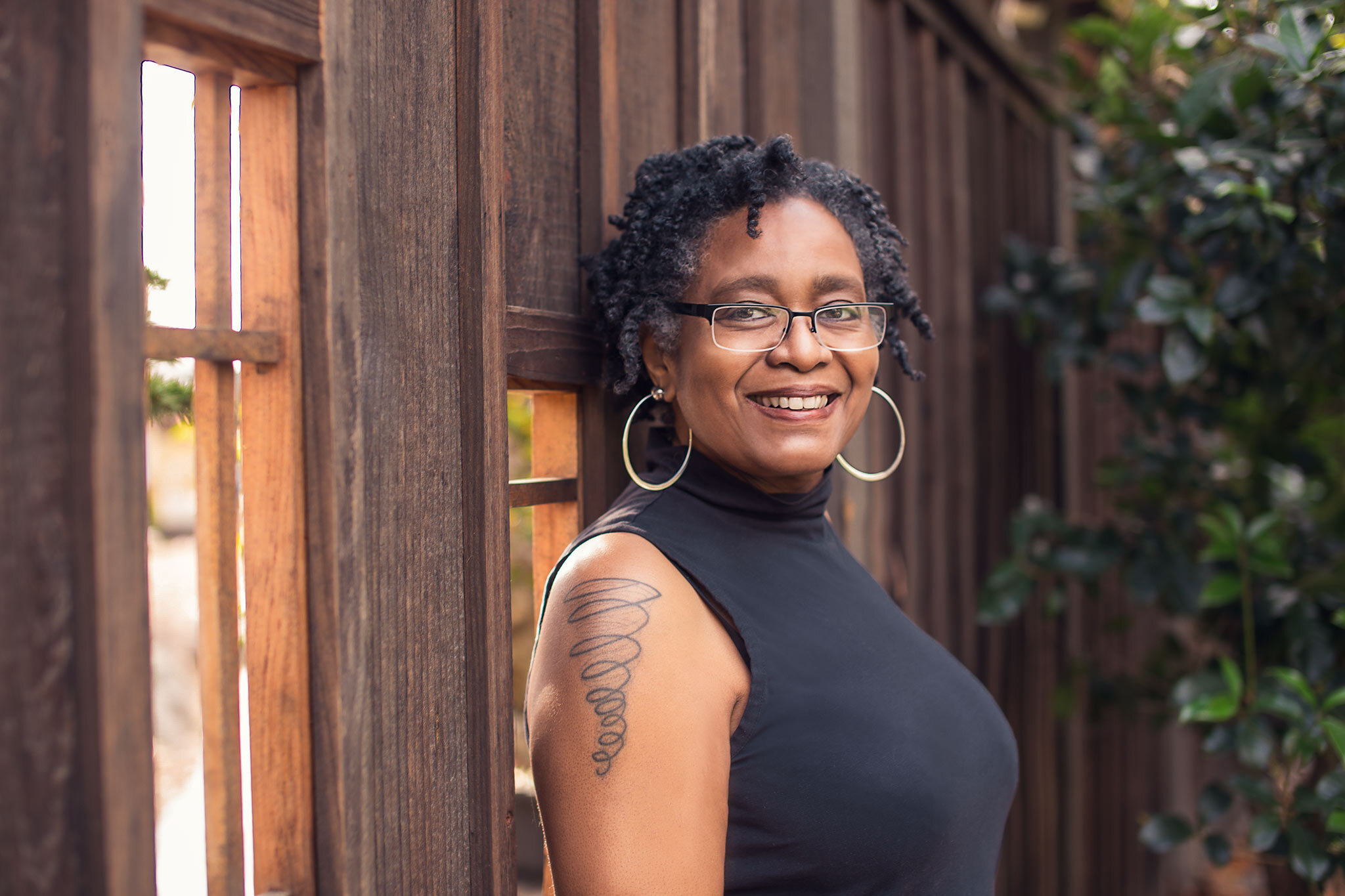


Cheryl Derricotte, The Autobiography of the late Mary Ellen Pleasant, A Black Capitalist in Gold-Rush Era California. Originally spoken by herself; now faithfully transcribed & lovingly published by Cheryl Patrice Derricotte, 2022, Artist Book, Hardback, Linen Cover 103 Pages, Edition of 12 + 3 APs, 5.25"(w.) x 7.25"(h.) x .5 (d.).
This work was initiated during Cheryl Derricotte’s artist-in-residency at Paper Machine in New Orleans and completed in 2022. During her residency at Paper Machine, Derricotte began work on a new project entitled Friend of John, to visually tell the story of Mary Ellen Pleasant, who was a trusted confidant of abolitionist John Brown. Mary Ellen Pleasant was once the richest Black woman in San Francisco, a self-proclaimed “capitalist” on the 1890 census. Pleasant was bi-coastal; a central figure in both California politics and the Underground Railroad. She reportedly gave John Brown $30,000 towards the raid on Harper’s Ferry.

Cheryl Derricotte, How I Crossed Over, 2021, Ink, Rives BFK, 3-Color Screen print, Edition of 35 + 8 AP, Image Size 18” x 24”, Paper Size: 19” x 26”
This work was created during Derricotte’s artist-in-residency at Paper Machine in New Orleans from Nov 1 - 30, 2021. During her residency at Paper Machine, Derricotte began work on a new project entitled Friend of John, to visually tell the story of Mary Ellen Pleasant, who was a trusted confidant of abolitionist John Brown. Mary Ellen Pleasant was once the richest Black woman in San Francisco, a self-proclaimed “capitalist” on the 1890 census. Pleasant was bi-coastal; a central figure in both California politics and the Underground Railroad. She reportedly gave John Brown $30,000 towards the raid on Harper’s Ferry.
The project’s title, Friend of John, is a play on words with the well-known Alcoholics Anonymous (AA) signifier “Friend of Bill,” as anonymity and privacy were equally paramount to the abolitionist movement. The title also acknowledges Mary Ellen Pleasant’s final act of defiance, as she requested her tombstone state that she was “a friend of John Brown.”
Derricotte was interested in Mary Ellen Pleasant’s relationship to both San Francisco and New Orleans. Pleasant’s journey to Gold Rush-era California took her through New Orleans. In her autobiography, Mary Ellen Pleasant said she was the daughter of a “full-blooded Negress from Louisiana.” This made some biographers believe that Pleasant also spent time in Louisiana. It is reported that during the period of her life between slavery and freedom, Pleasant spent some time as a linen worker at the Ursuline Convent in New Orleans, whilst waiting to travel to San Francisco. Mary Ellen Pleasant sailed on The Oregon, a mail steamship that made port in New Orleans, before continuing through Panama to California. Derricotte turned to the Historic New Orleans Collection (HNOC) to find an image of the city c. 1850 to use in her art projects.
The HNOC image was used in a new 3-color screen-print, How I Crossed Over (2021), which visually illustrates Mary Ellen Pleasant’s journey. As there were no pictures of Mary Ellen Pleasant until shortly before her death, she is represented by a simple Quaker-style dress, as she grew up on Nantucket. There is also an image of The Oregon, the mail steamship, as well as the two cities New Orleans and San Francisco. The image is tied together with a white line resembling stitching; it is in fact the shape of the route the ships used to take to get from one side of the country to the other.

Cheryl Derricotte, Living on the Fence-Line, 2020-2021, Los Angeles.
Derricotte’s new public work is being installed this week, Feb. 1, 2021 on a billboard at the intersection of N Highland Ave & Willoughby Ave in Los Angeles, CA. Cheryl is one of eleven featured artists, (including the legendary Judy Chicago), in a tri-city public art exhibition entitled “Whistling in the Dark” sponsored by SaveArtSpace. The works will be on view for one month.
Living on the Fence-Line (2020) is part of a series of work from Oil and Water. The art in this series looks at communities that live in the shadow of oil including California places like Richmond (pictured), Los Angeles and Manhattan Beach.
“I stand for art and liberation. Public art is one of the brave spaces for difficult conversations—like the fact that over 16% of the US Black population lives near an oil refinery. That’s why I am so excited that SaveArtSpace selected my work to contribute to a brave conversation about environmental racism.” --Cheryl Derricotte

Cheryl Derricotte has been selected for the 2020 YBCA100 list. She is featured among the creative changemakers and everyday heroes YBCA is recognizing for their efforts in building sustainable, equitable, and regenerative communities. Learn more at YBCA’s website.

Cheryl Derricotte, “2017 Year-at-a-Glance: 214 Dead Black Men." (2018), Ink on paper; hand-stamped bullet imagery on wall calendar, collection of de Young Museum, San Francisco.
Photo credit: Kija Lucas

the wolf & the wheat
Cheryl Derricotte’s The Wolf & the Wheat, 2020, work on paper, edition of 6 + 1 AP, 11” x 14” each image. Please contact gallery to purchase.
Derricotte’s work references Thomas Jefferson’s often quoted commentary on the peculiar institution of slavery:
"But as it is, we have the wolf by the ear, and we can neither hold him, nor safely let him go. Justice is in one scale, and self-preservation in the other."
(Jefferson discussing the Missouri question and slavery to John Holmes April 22, 1820. Ford, Paul Leicester, ed. The Works of Thomas Jefferson, Volume 12. New York: G.P. Putnam's Sons, 1905, p. 159.)
Background: The most famous French Ambassador in US History was Thomas Jefferson. he served in France for 5 years as the “American Minister to the Court of Versailles.” Jefferson was a firm supporter of the French Revolution in Paris and upon his return to the US, when he was appointed Secretary of State by Pres. Adams. He would go on to be Vice President and later, the third President of the United States.
Jefferson’s affection for revolution was not extended to Black people. He was born into a slave-holding family, thus inheriting his own slaves and later, slaves from his deceased wife that she brought into the marriage. Over the course of his life, he owned 600 people. In a typical year, he owned 200 people, ½ of them under the age of 16.
One of those people was Sally Hemings, the slave girl who was 14 when she went with Jefferson’s family to Paris as his daughter’s maid. When she was 15 years old and clear that she was free in France, she told Jefferson she would not return with him unless he agreed to free her unborn children. She was pregnant when she returned to Monticello and at 16 had the first of 6 children fathered by Thomas Jefferson.
Jefferson often said that slavery needed to end but did not take its dissolution on at a federal level. He believed in individual plantation reform and at Monticello, he moved away from tobacco and did not seek out cotton. Rather, he planted wheat and trained many of his slaves as skilled laborers to build out his property and neighboring shops.
And, although Jefferson freed her living children as agreed, he never freed Sally Hemmings.

Cheryl Derricotte, The Wolf & The Scale, 2020, work on paper, edition of 6 + 1 AP, 11” x 14”.
To inquire on purchasing these works, please email info@reriddle.com

Cheryl Derricotte is a visual artist and her favorite mediums are glass and paper. Originally from Washington, DC, she lives and makes art in San Francisco, CA.
She has an extensive background in the arts and community development. Cheryl holds the Master of Fine Arts from the California Institute of Integral Studies (CIIS), the Master of Regional Planning from Cornell University and a B.A. in Urban Affairs from Barnard College, Columbia University.
Recent awards include the Vermont Studio Center Residency (2020/2021); Antenna Paper Machine Residency (New Orleans); San Francisco Individual Artist Commission, and the Puffin Foundation Grant, (all 2019/2020). She is also the recipient of the Hemera Foundation Tending Space Fellowship for Artists; the Rick and Val Beck Scholarship for Glass; Emerging Artist at the Museum of the African Diaspora; Gardarev Center Fellow; Art Alliance for Contemporary Glass’ Visionary Scholarship and a D.C. Commission on the Arts & Humanities/ National Endowment for the Arts Artist Fellowship Grant.
Cheryl is an active thought leader in the arts. She serves as the Secretary, (aka The Minister of Information), for Three Point Nine Art Collective, a group of Black artists who live and make art in San Francisco. She is also the Chief Mindfulness Officer of Crux, a nationwide cooperative of Black artists working at the intersection of art and technology through immersive storytelling (VR). Cheryl is the creator of the Society of Brave Artists, an interview series on Instagram highlighting contemporary political art (@societyofbraveartists). To learn more about her work.
Photo credit: Nye' Lyn Tho.

Cheryl Derricotte’s Artist Statement:
Identities shaped by home (or homelessness); natural beauty (or disasters), memories of happiness (or loss) inspire my artwork. This results in works on glass and paper. Both materials are translucent and seemingly fragile, yet they are hearty enough to survive the passage of time between civilizations.
I make art from research. This type of inquiry also leads me not just to economic but also environmental concerns. Observations of current events, politics, and urban landscapes are my entry into these issues.
Most often I create work in series. “Ghosts/Ships” brings to life images of slaves and slave ships through the public domain collections at the British Library and the New York Public Library. “Oil and Water,” looks at communities that live in the shadow of oil: California places like Richmond, Los Angeles and Manhattan Beach. “We Buy Houses,” examines the foreclosure crisis through glass and works on paper. Last but not least, “The Blue Wall Project” (working title) maps people killed by the police using data from the Guardian UK’s “The Counted” and the Washington Post’s “Fatal Force.”
To make my work I use a variety of glass and printmaking techniques. My cold glasswork (unfired) often takes form as sculptural mixed media, involving books and found objects. Warm glass means work fired in a kiln up to approximately 1,500°F. I enjoy layering images and text onto warm glass pieces, featuring public domain historical photographs, drawings, or my own photographs. My preferred techniques include screen-printing with glass enamels or powder printing. My work on paper employs the techniques of image transfers, ink stamping and collage. Over the past few years I have been enjoying learning the craft of bookbinding. I recently exhibited my first artist book, entitled “Emily” about a runaway slave’s journey along the Ohio River.
Text is an important component of my artwork. I often say that I live under the tyranny of title. A phrase will get stuck in my head, such as “21st Century Capital” and I wrestle with it until an artwork is created. Thus, many of my pieces have titles before I ever make a schematic drawing, much less cut a piece of glass.
I am a visual storyteller. My work weaves personal and political geography to confront contemporary society’s relationship to place and equity.